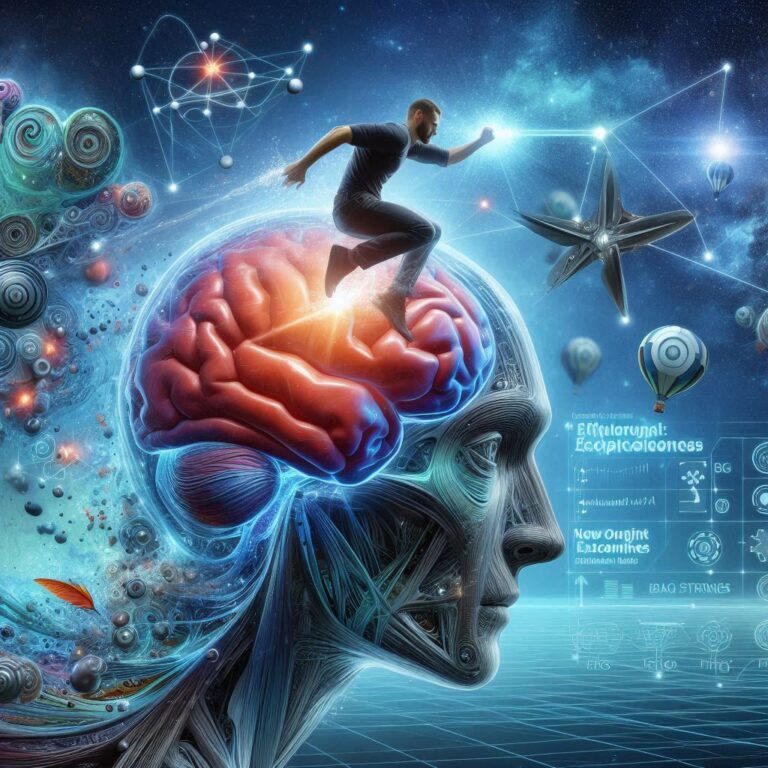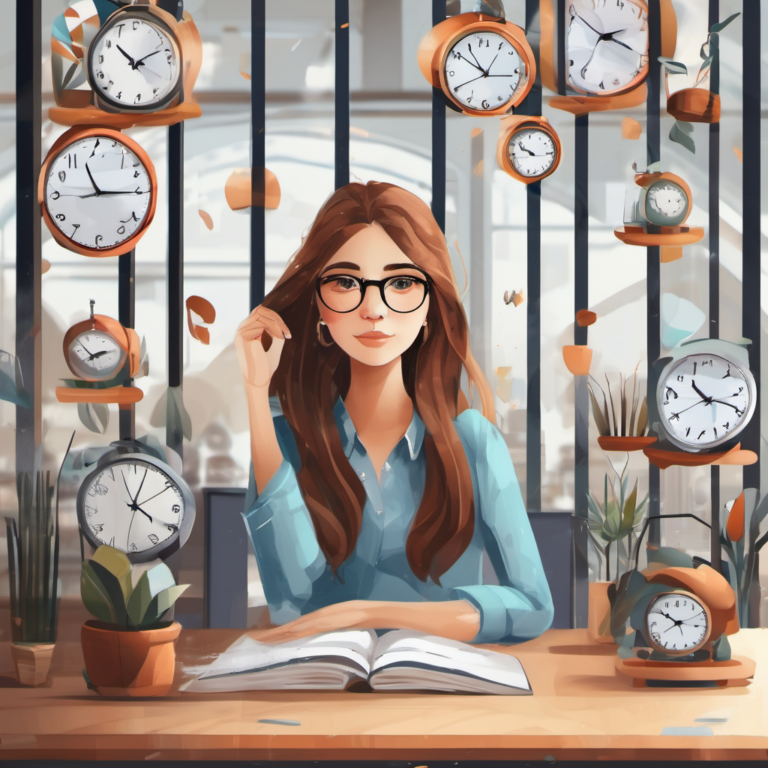Can Art Help You Understand Your Emotions Better?
Introduction
Emotional intelligence (EI) is the ability to recognize, understand, and manage our emotions, as well as the emotions of others. In a world where emotional intelligence is increasingly valued, finding innovative ways to enhance this skill has become essential. One powerful method that has gained recognition is the use of creative arts, such as painting or music, to develop emotional awareness and regulation.
Art, in its many forms, has long been a medium for expressing deep, often unspoken emotions. Whether it’s the stroke of a brush on a canvas or the rhythm of a melody, art has the unique ability to reach the core of our emotional experiences. By engaging with art, individuals can explore and understand their emotions, leading to improved emotional intelligence.

Understanding Emotional Intelligence
What is Emotional Intelligence?
Emotional intelligence refers to the capacity to identify and manage one’s own emotions, as well as the emotions of others. It involves skills such as emotional awareness, empathy, emotional regulation, and social skills. Unlike cognitive intelligence (IQ), which is largely fixed, emotional intelligence can be developed and enhanced over time.
Components of Emotional Intelligence
There are five main components of emotional intelligence:
- Self-Awareness – Recognizing and understanding your own emotions.
- Self-Regulation – Managing your emotions in a healthy way.
- Motivation – Using your emotions to stay focused and achieve goals.
- Empathy – Understanding and sharing the feelings of others.
- Social Skills – Managing relationships and interacting with others effectively.
The Role of Emotional Awareness in EI
Emotional awareness is the foundation of emotional intelligence. It involves being mindful of your emotions as they arise and understanding how they influence your thoughts and actions. Developing emotional awareness is crucial for self-regulation and empathy, which are key components of emotional intelligence.

The Connection Between Art and Emotions
Art as a Form of Expression
Art is a powerful form of self-expression. Through creative activities like painting, drawing, or playing music, individuals can express feelings that might be difficult to articulate with words. This process of expression allows for a deeper exploration of emotions and can lead to greater emotional awareness.
The Psychological Impact of Art
Engaging in artistic activities can have profound psychological benefits. Art therapy, for example, is a well-established practice that uses creative processes to help individuals explore their emotions, reduce anxiety, and improve mental well-being. The act of creating art can serve as a therapeutic outlet, helping individuals process complex emotions.
How Art Influences Emotional Regulation
Art not only helps in identifying emotions but also in regulating them. For instance, painting can be a calming activity that allows individuals to work through their emotions in a controlled and constructive manner. Similarly, music can evoke emotions and help in managing them by providing a means to either amplify or soothe emotional states.

Using Painting to Enhance Emotional Awareness
The Therapeutic Power of Painting
Painting is a particularly effective medium for exploring emotions. The tactile nature of painting, combined with the ability to use color, shape, and texture, allows individuals to express emotions in a tangible way. This process can be incredibly therapeutic, offering a non-verbal outlet for emotions.
Case Studies: Painting as a Tool for Emotional Healing
Numerous case studies highlight the role of painting in emotional healing. For example, individuals who have experienced trauma often use painting to express emotions they struggle to verbalize. Over time, this practice can lead to greater emotional clarity and healing.
Techniques for Expressing Emotions Through Painting
To use painting as a tool for emotional awareness, consider the following techniques:
- Color Therapy: Use colors that reflect your current emotional state.
- Abstract Expression: Focus on shapes and forms rather than realistic depictions to express emotions.
- Symbolic Art: Incorporate symbols that represent your feelings or experiences.
Music and Emotional Intelligence

The Emotional Impact of Music
Music has a direct and powerful impact on emotions. A single piece of music can evoke a wide range of feelings, from joy and excitement to sadness and nostalgia. This emotional resonance makes music an effective tool for exploring and understanding emotions.
How Music Helps in Emotional Regulation
Music can also play a significant role in emotional regulation. For example, listening to soothing music can help reduce stress and anxiety, while upbeat music can boost mood and motivation. By carefully selecting music that aligns with your emotional needs, you can use it as a tool for managing your emotions.
Examples of Music Therapy for Emotional Development
Music therapy is a clinical practice that uses music to address emotional and psychological needs. Through activities such as songwriting, playing instruments, or simply listening to music, individuals can develop greater emotional awareness and regulation.
Practical Ways to Develop EI through Art
Creating an Emotional Journal Through Art
One effective way to develop emotional intelligence through art is by keeping an emotional journal. Instead of writing, use art to document your emotions each day. This can include drawings, paintings, or even collages that reflect your feelings.
Using Music Playlists to Explore Emotions
Curating playlists that evoke different emotions is another practical approach. By intentionally listening to music that reflects various emotional states, you can explore and understand your feelings more deeply.
Art Exercises to Improve Self-Awareness and Empathy
Engage in specific art exercises designed to enhance emotional intelligence:
- Self-Portraits: Create self-portraits that reflect your emotional state.
- Empathy Exercises: Create art that represents the emotions of others.
- Mindful Art: Focus on the process of creating art rather than the outcome, paying attention to how it makes you feel.
Benefits of Developing Emotional Intelligence through Art
Improved Emotional Awareness
Regular engagement with art can lead to a heightened awareness of your emotions. By consistently exploring your feelings through creative expression, you become more attuned to your emotional landscape.
Enhanced Empathy and Social Skills
Art can also improve empathy and social skills. By creating art that reflects the emotions of others, you can develop a deeper understanding of their experiences, leading to stronger interpersonal relationships.
Better Stress Management and Resilience
Art offers a constructive outlet for stress, helping individuals manage their emotions more effectively. Over time, this can lead to greater emotional resilience and an improved ability to cope with challenges.
Challenges in Using Art for Emotional Development
Overcoming Emotional Barriers
One of the challenges in using art for emotional development is overcoming internal resistance. Some individuals may feel uncomfortable expressing their emotions through art, particularly if they have unresolved emotional issues.
Finding the Right Medium for Expression
Not all forms of art will resonate with everyone. It’s important to experiment with different mediums, such as painting, drawing, music, or sculpture, to find what works best for you.
Dealing with Emotional Overwhelm
Engaging with art can sometimes bring up intense emotions. It’s important to approach this process with care and seek professional guidance if needed, especially if you’re dealing with deep-seated emotional issues.
Case Studies and Real-Life Examples
Personal Stories of Emotional Growth Through Art
Many individuals have shared their personal journeys of emotional growth through art. For example, some have found that painting allows them to process grief, while others use music to navigate periods of depression.
Examples from Art Therapy Sessions
Art therapists often report profound transformations in their clients. For instance, clients dealing with anxiety may find relief through abstract painting, while those with anger issues might benefit from the rhythmic expression in drumming.
Insights from Artists on Emotional Exploration
Artists themselves often speak about the emotional journey involved in creating art. Many describe how their work reflects their inner emotional landscape and serves as a form of self-discovery.

Conclusion
Incorporating creative arts like painting or music into your life is a powerful way to develop emotional intelligence. By engaging with art, you can explore your emotions, enhance your emotional awareness, and improve your ability to regulate your feelings. Whether through painting, music, or another form of art, the process of creative expression offers a unique path to emotional growth and well-being. So why not pick up a brush or turn on your favorite playlist and start your journey towards greater emotional intelligence today?
FAQs
- What types of art are most effective for developing emotional intelligence?
While any form of art can be effective, painting and music are particularly powerful for exploring and expressing emotions. - Can anyone improve their emotional intelligence through art?
Yes, anyone can improve their emotional intelligence through consistent engagement with art, regardless of their artistic skills. - How long does it take to see results in emotional regulation through art?
The timeline varies for each individual, but with regular practice, improvements in emotional regulation can be noticed within a few weeks to months. - Is professional guidance necessary for using art to develop EI?
While not always necessary, professional guidance from an art therapist can be beneficial, especially for individuals dealing with complex emotional issues. - How can I get started with using art to improve my emotional intelligence?
Start by experimenting with different forms of art that interest you, such as painting, drawing, or music. Set aside regular time for creative expression and reflect on your emotional experiences during the process.






